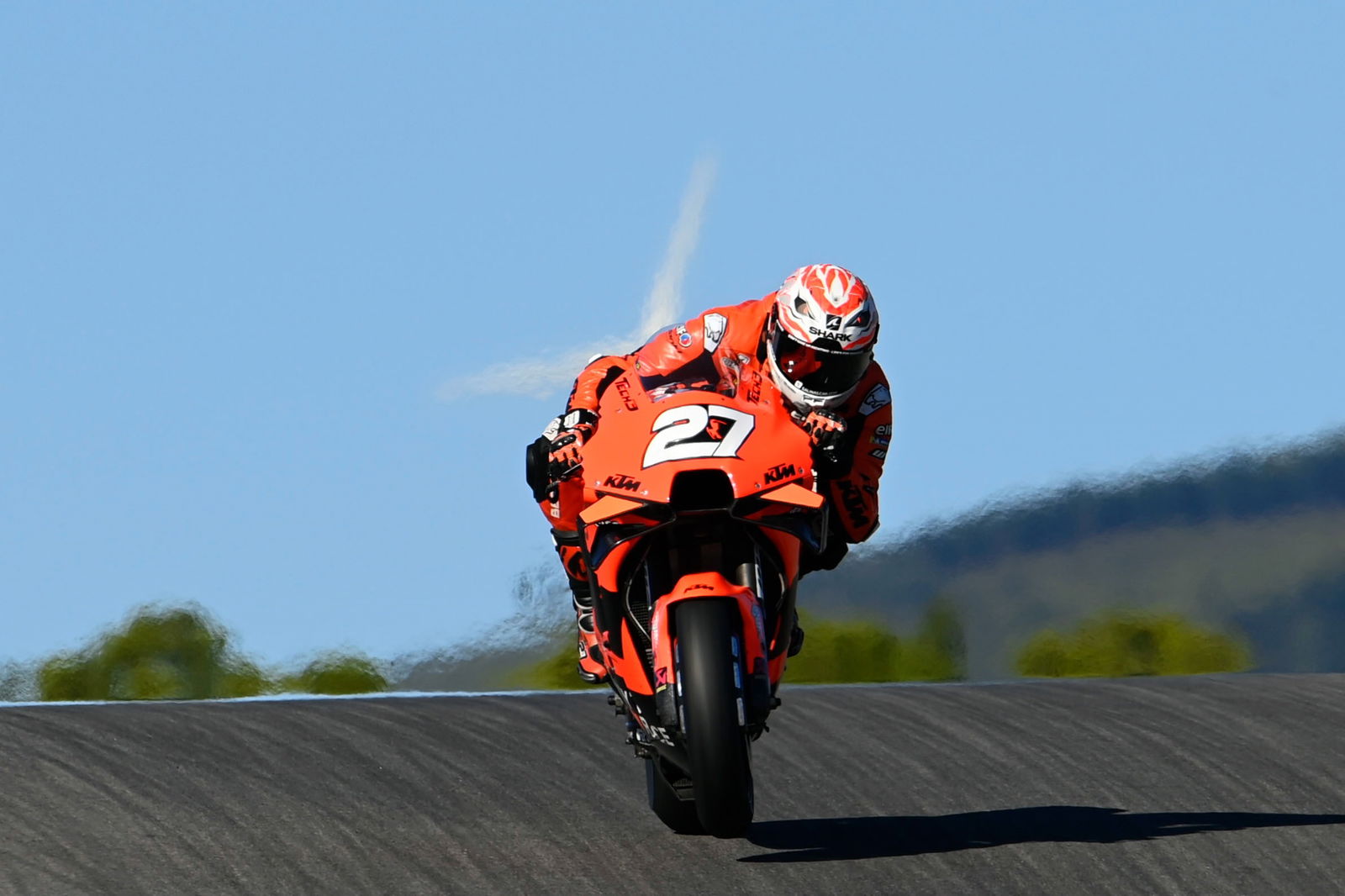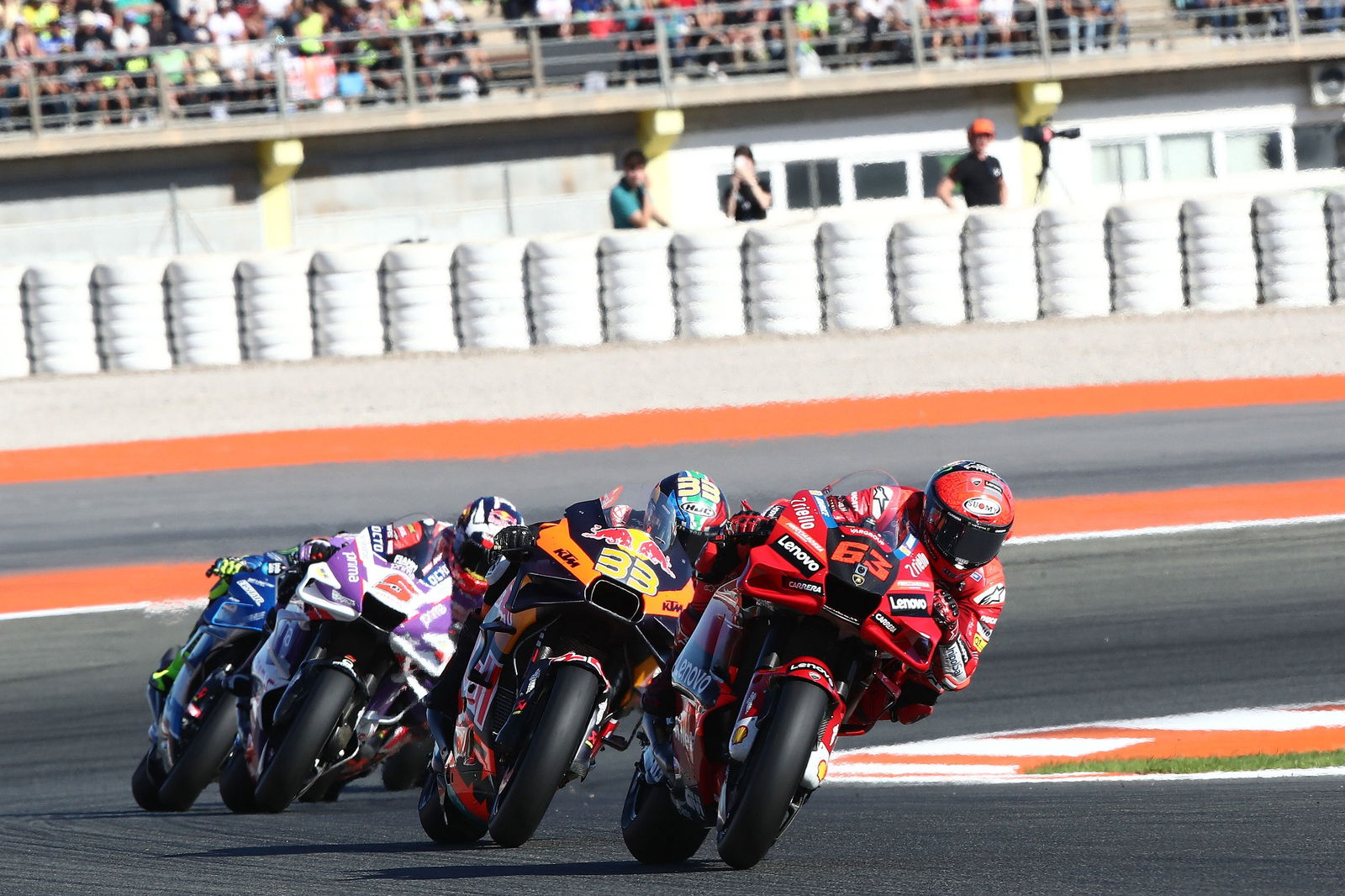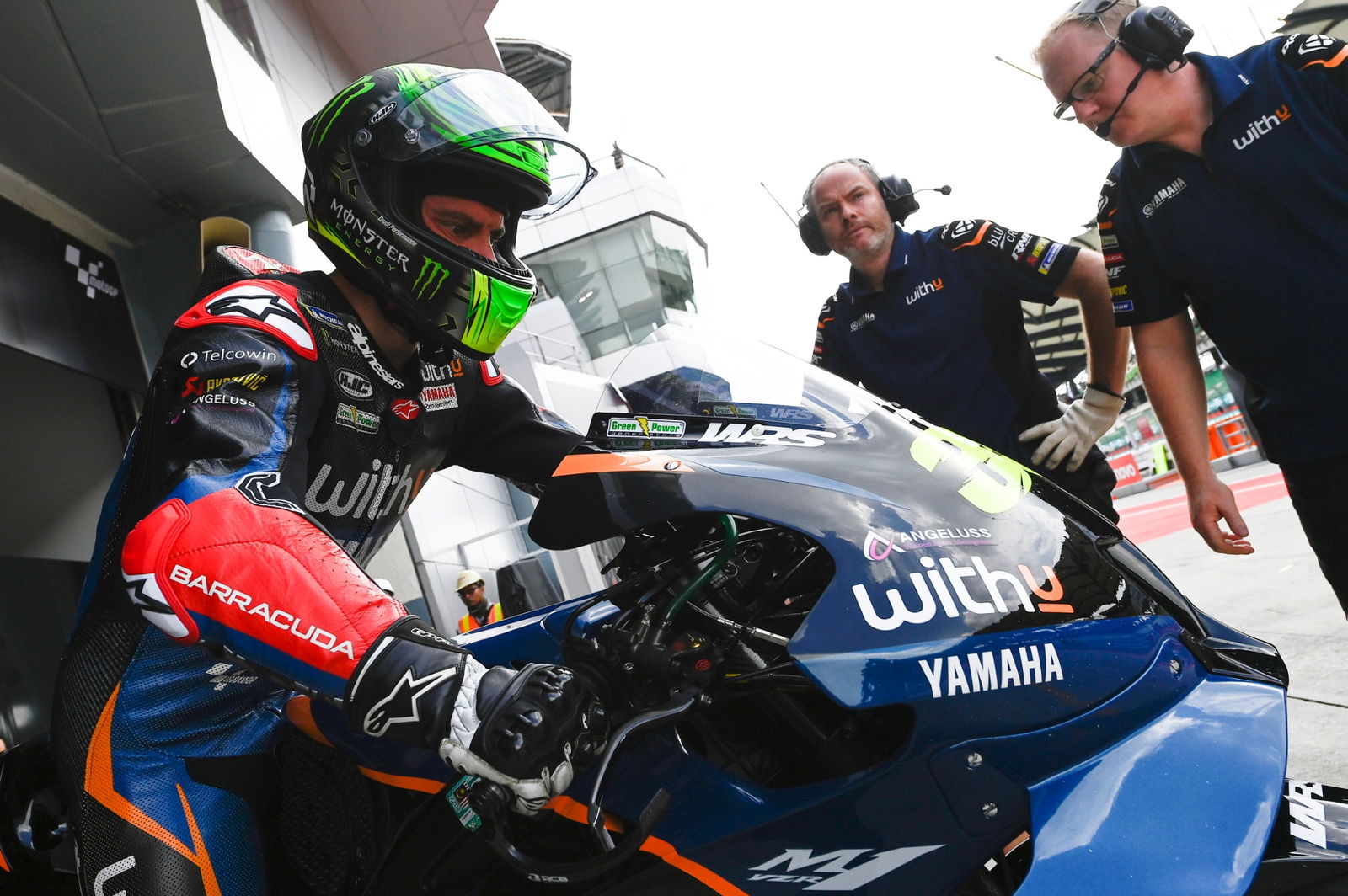MotoGP vs WorldSBK: Current and past riders pick which motorcycles are harder to ride

Ducati enjoyed its most successful season ever as it returned to the top of two-wheel motorsport thanks to Francesco Bagnaia winning the MotoGP title, and Alvaro Bautista delivering in superb fashion to take a dominant WorldSBK title win.
Their title win in MotoGP was the first since Casey Stoner in 2007, while in WorldSBK Bautista’s championship success was the Italian manufacturer’s first since Carlos Checa in 2011.
- Crutchlow: 'When I ride, it's realistic' - Exclusive
- Behind-the-scenes: Honda’s big changes in their garage
But while the racing in both categories was exceptional, and for very different reasons - MotoGP once again produced several winners while a monumental comeback from Bagnaia saw him overturn an unlikely deficit to beat Fabio Quartararo to the title - whereas in WorldSBK the top three of Bautista, Toprak Razgatlioglu and Jonathan Rea went toe-to-toe at nearly every round - one debate resurfaced more than once which centred around the differences between both categories and in particular the challengers of riding both types of machines.
That’s why, with the help of experts such as Iker Lecuona who has competed in both championships over the last two seasons, Razgatlioglu, former world champions James Toseland and Carl Fogarty. plus others, we are taking a look at which bike is or should be considered the hardest to ride.
MotoGP
Starting with the pinnacle of racing, MotoGP machines are like no other as the level of technology, whether it be ride-height devices - front ride-height devices have been banned for the 2023 campaign - or aero packages have helped these prototype machines generate more downforce than ever before.
MotoGP bikes are roughly 10kg lighter than Superbikes, although the power-to-weight ratio along with the outright speed of these bikes makes MotoGP machinery arguably more difficult to control.
Due to the current levels of aero and downforce that’s implemented in MotoGP, riders have suffered more from over-heating front tyres when following other riders, which has resulted in many crashes.
But what about Michelin tyres? Well, there’s no doubting the performance of the Michelin tyres and they have repeatedly shown that its performance with MotoGP bikes is unrivalled compared to the previous Bridgestone, however, more cold tyre crashes also take place in MotoGP compared to what we see in WorldSBK - Pirelli tyres is the current compound used in WorldSBK.
Highsides can be one of the most dangerous types of crashes, and again, due to the extreme levels of performance being churned out of MotoGP machinery, riders have an added challenge of making sure tyre temperatures are in their optimal working window, which does not appear to be as crucial of a demand in WorldSBK.
After switching from MotoGP to WorldSBK last season, Lecuona favoured the Michelin’s when bringing up tyres between the two: "In general I think it’s 100% completely different. We have electronics in Superbike but it works differently to MotoGP and also the engine is more a standard engine I would say.

"It’s not a prototype. The tyres are not a prototype like Michelin. I go with Pirelli and with Pirelli I have a lot of shaking on the straight.
"You lose the grip very early; maybe after five laps you have grip and then you need to ride the bike with it spinning and being sideways. The line is completely different because the chassis is more soft.
"You have more movement when you go on the straight, but with the MotoGP you can go a bit more smooth when you use the tyres. I think it's totally different, so for me this is a big challenge.
"Also the brakes… the brakes in MotoGP I go with carbon disc, even on a wet track these brakes have crazy potential. Now I have like a standard brakes; very good brakes but it is not the same. It’s a big challenge for me because this bike is also heavier."
WorldSBK
More electronics is one of the major aspects that stands out about WorldSBK machinery, and although this is probably seen as a benefit to riders with such experience, those making the switch from MotoGP feel differently.
Brad Binder is one of those who claimed a standard Superbike is difficult to ride based on the amount of electronic aids available.
Those comments, which were made to Motorsportmagazine.com, were about a standard superbike which is slightly different to a race-developed Superbike, although similarities do exist.
“When I’m at a track and I ride a standard superbike I feel like I can’t ride it because it’s got so many electronics aids that work all the time,” said Binder. “The TC [traction control] is so aggressive that you can’t ride the bike properly.
“The wheelie control is the same – the bike barely wheelies and then the anti-wheelie cuts in straight away and quite aggressively, whereas with a MotoGP bike you have the front wheel quite high before the anti-wheelie comes in and you can keep the wheelie going.”
Another rider who has competed recently in MotoGP before riding a WorldSBK machine after replacing an injured Lecuona at Phillip Island, was HRC’s Tetsuta Nagashima, with the Japanese rider stating that MotoGP bikes are more difficult to ride.
Nagashima said: "I was expecting to struggle a little more because this is my first time here in WorldSBK and pretty much my first time on Pirelli tyres.

"I raced here a few weeks ago in MotoGP of course, and that helped a bit in that I was immediately able to find pace with the CBR. I think the MotoGP bike is a little bit more difficult.
"When I ride the Superbike, it was a bit easier because I have experience from the Suzuka 8 Hours with a bike I know well.”
The difference in horsepower between the two machines is also something that is significant, with a WorldSBK reaching up to 250HP, whereas a MotoGP machine can eclipse the 300HP mark.
Does ‘bike feel’ give Superbikes an advantage when it comes to control? Known for being ultra-stiff bikes, MotoGP machines have a smaller operating window than Superbike machinery, whilst also giving the rider a tougher challenge.
Many riders have pointed to Superbikes being more forgiving than MotoGP machines in the past, which would lead us to thinking that MotoGP is again, the tougher of the two.
But what do other riders think?
Speaking exclusively to Crash.net last year, former WorldSBK champion and MotoGP rider, James Toseland, said: "I think they are very individually specialised categories and have specialised riders riding these machines to their limits. I know from first-hand [experience] that MotoGP bikes require a higher skill level because the technology allows you to go faster.
"You have to be a better rider in MotoGP just because it requires you to push that package to the limit which is further than a production bike.
"To come to World Superbikes and have a package that isn’t as difficult to get to its limit will be quite comfortable for the likes of; you mentioned Darryn Binder and Remy Gardner etc. But there’s all kinds of factors at play that your Jonathan Rea’s, Toprak's and Bautista’s have experience on. Mostly talking about tyres etc.

"Understanding tyres is the biggest key to being able to ride any package to its limits. With the two championships being on different tyres it takes a bit of getting used to with that.
"I remember when I was racing Biaggi when he came from GP to Superbikes for the first year. I was riding round the outside of him because the Michelin’s took two laps to warm up but the Pirelli’s took two corners to warm up.
"It’s these little details that every rider needs to know. Jonathan Rea pushes his bike to exactly the same limitation as Quartararo on the Yamaha. But because the technology is so good in MotoGP now, it almost helps the rider to be able to push it to its limits."
Fogarty has a different take…
While the former four-time Superbike champion highlighted just how good MotoGP bikes have become, Fogarty couldn’t help but feel it’s taken away from the rider.
"It’s funny, I see it differently than that,” Fogarty told Crash.net. “I don’t know what it is but I’m looking at the riders and I don’t know how good the riders are anymore because the bikes are so good.
"The technology on the bikes is incredible. I listen to the commentators getting excited because the whole field is within a second which makes me think, why is that? There’s a reason for that isn’t there. All the bikes are the bloody same.
"The bikes are so good and the technology is so good that it’s taken away from the rider in some ways. I don’t know who the best rider is anymore. It’s a funny one to comment on really because if you switch off all the electronics which they’ll obviously never do, then I would see which one is the most talented rider.
"As it is with all the bikes being so good; they’re all trying to find that little bit somewhere. You never see the rider lose the rear anymore or do a highside because of the bikes. So the whole field is very, very close together but it’s almost like F1 cars.

"Everyone goes round together and [they] just wait until the last lap or two. So I don’t know really, I’m a bit funny about it."
One of the most recent riders to swap between both bikes was Razgatlioglu, when the Turkish star made his debut aboard MotoGP machinery with a one-day test at Brno last season.
"This was my first day on the Yamaha M1 MotoGP bike and it felt completely different to my R1," said Razgatlioglu. "More horsepower, different electronics, seamless gearbox, all of which is completely new for me.
"With every lap I learned more, because after WorldSBK it’s not so easy to adapt to the MotoGP machine.
"Fortunately, I had Cal Crutchlow on hand to offer advice and he was able to help me a lot. The bike feels good, especially on the straight where it’s very fast, and it was interesting to experience the carbon brakes."

